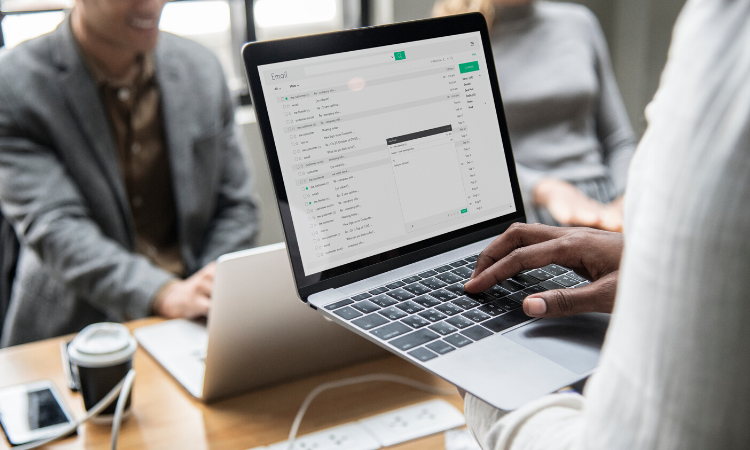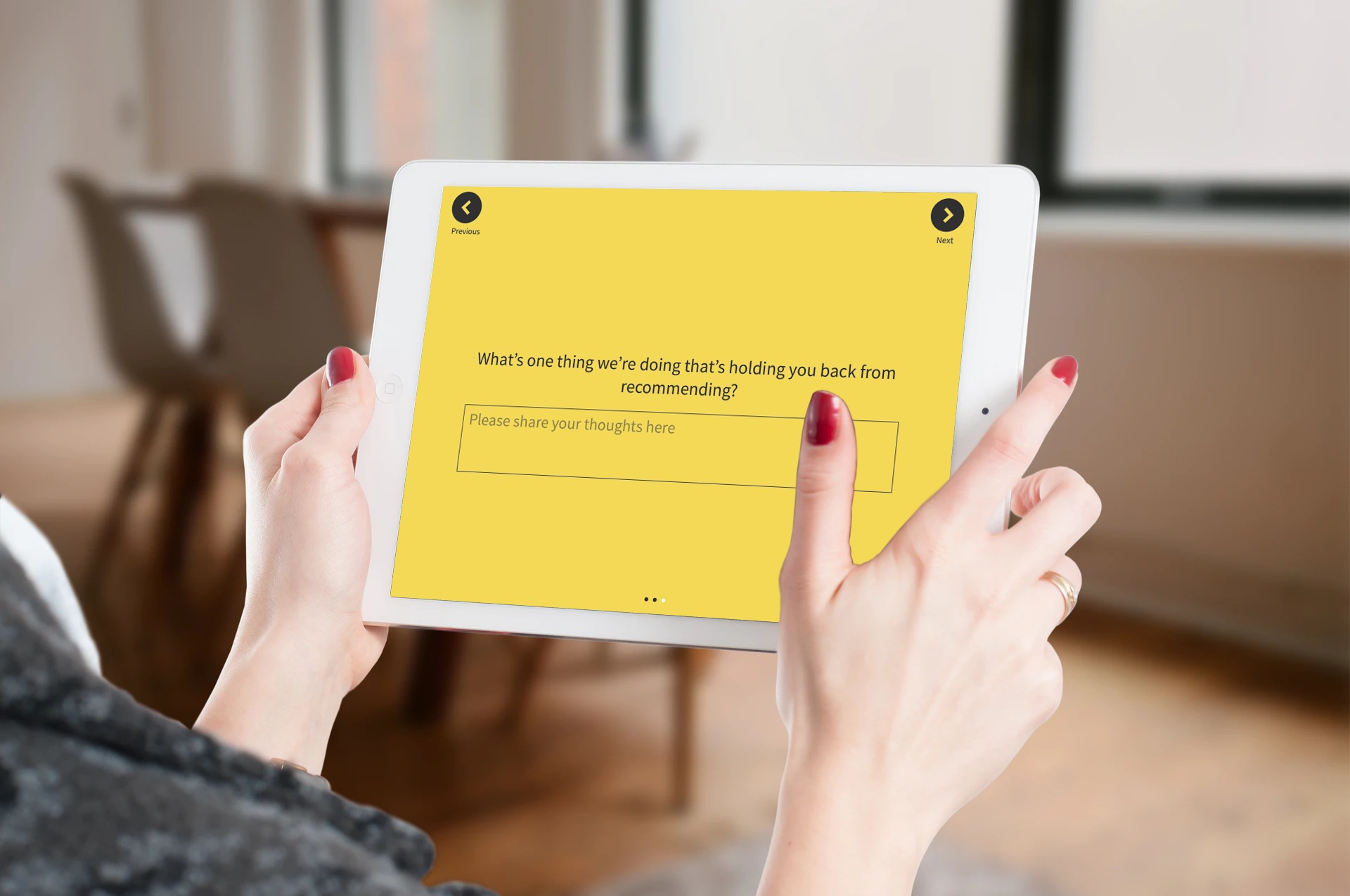Looking to boost customer engagement and gather valuable feedback? Embedded email surveys can serve this purpose. Email is one of the most common and useful channels of official communication with your clients, and it can be well utilized to gather actionable feedback from customers through embedded email surveys.
While traditional email surveys can end up lost in a pool of promotional and spam emails, surveys embedded in the email can go a step ahead by directly engaging your customers and can fetch you more responses. These surveys are quick to respond and can be accessed on multiple devices.
In this article, we will explore what embedded email surveys are, how you can embed them in your emails, the types of questions to add to your surveys, and some best practices to leverage them to get maximum survey responses from your customers. Let’s get started!
TL;DR
- Embedded email surveys are seamlessly integrated within the email body wherein the first question of the survey is embedded or displayed in the email body itself along with the email survey invitation message to take the survey. These surveys have a higher chance of getting responded to than regular email surveys as they engage the customers at the first sight of the email.
- Creating and sharing embedded email surveys is easy. You can easily create & customize the surveys, choose the option to embed the first question of the survey in the email, add recipients, and send the survey.
- The best questions you can embed in an email survey are metric questions like NPS, CSAT & CES questions, rating scale, button choice, picture choice, and checkbox-type questions.
- We have also covered some of the best practices for embedding surveys into email like keeping the surveys short with the first question as a rating question, using an engaging subject line, ensuring the surveys are mobile optimized, and more.
- Zonka Feedback is a powerful email survey tool that helps businesses capture feedback, analyze results, and take instant actions to close the feedback loop and improve customer satisfaction. It also offers a free trial for 14 days.
Get Started with Email Surveys
Send Email Survey Invitations, Embedded Email Surveys, and In-Signature Surveys, and measure Customer Feedback remotely, in real-time.

What are Embedded Email Surveys?
Embedded email surveys are a great way to get more responses to your surveys. It is a simple way in which the first question of the survey is embedded in the email body. As the question is displayed in the email, it prompts the customers to respond to that question and so they are more likely to respond as soon as they open the email and see the survey.
Once they click to choose a response option and answer the first question, it takes them to the next question of the survey. Embedded email surveys streamline data collection, enabling recipients to respond without redirection, and ensuring efficient data capture with an embedded email verifier.
Email Embedded Survey Question
An email-embedded survey question is the first question of the email survey and is embedded in the email body so that the customers can see it as soon as they open the email. The question prompts the customers to respond to the survey quickly and as soon as they respond, it records their responses and takes them to the rest of the survey.
This is a great option for email surveys as it leads to more responses when contacts are able to see the question directly in the email body.
What’s the Issue with Regular Email Surveys?
Regular email surveys contain one quick introduction to the survey, inviting the customers to take the survey followed by a hyperlink to the survey. The chances are high that the customers do not click on the survey link, or abandon their idea of responding if the survey link takes time to load. Embedded form surpasses this probability and directly engages your customers in the survey by displaying the first question.
With Zonka Feedback, you can directly embed your survey questions in the email by selecting the option to embed the survey while distributing your email survey to the customers. Let’s learn the steps to embed surveys in your emails.
Steps to Embed Survey in an Email
Zonka Feedback is an effective email survey tool that enables you to create and share powerful surveys with your customers, collect their feedback, and make improvements to boost customer experience. It helps you leverage your email survey to collect more responses from your customers by including embedded survey question in them. This way, you can obtain feedback in real time and get a higher response rate on your survey effortlessly.
Create embedded surveys in emails by following these steps to embed a survey in the emails with the help of Zonka Feedback.
1. Create your Email Survey
The first step to sending an embedded email survey is creating a survey and adding questions to it.
- Login to your Zonka Feedback account, navigate to ‘Surveys’ and add a new survey by choosing the option ‘Add Survey’, or click on the (+) icon, and then select Add Survey to start creating a new survey.
- Choose the relevant template among 100+ survey templates available. You can also choose to start a new survey from scratch or create the survey with AI.
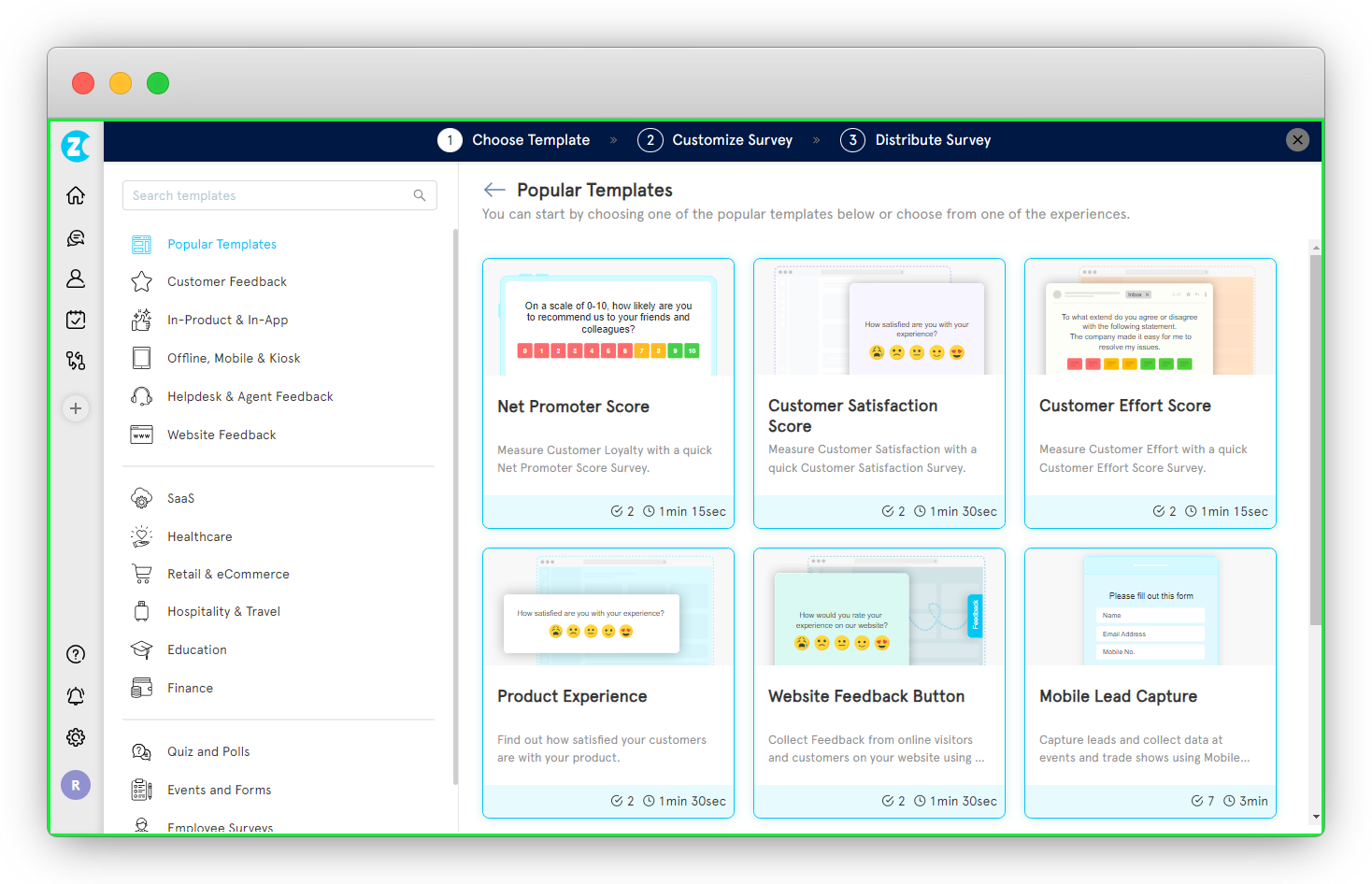
2. Choose the Channel of Distribution
- As soon as you choose an email survey template or another method to create the survey, a sample survey will appear on the screen and you will be asked how you want to distribute the survey. Select the email option from there.
- Click on Next to go ahead and design your survey.
- A popup will appear on the screen asking for a name and description of the survey. Write the name and description of your choice. Description is an optional field, so you can decide whether to fill it or not as per your convenience.
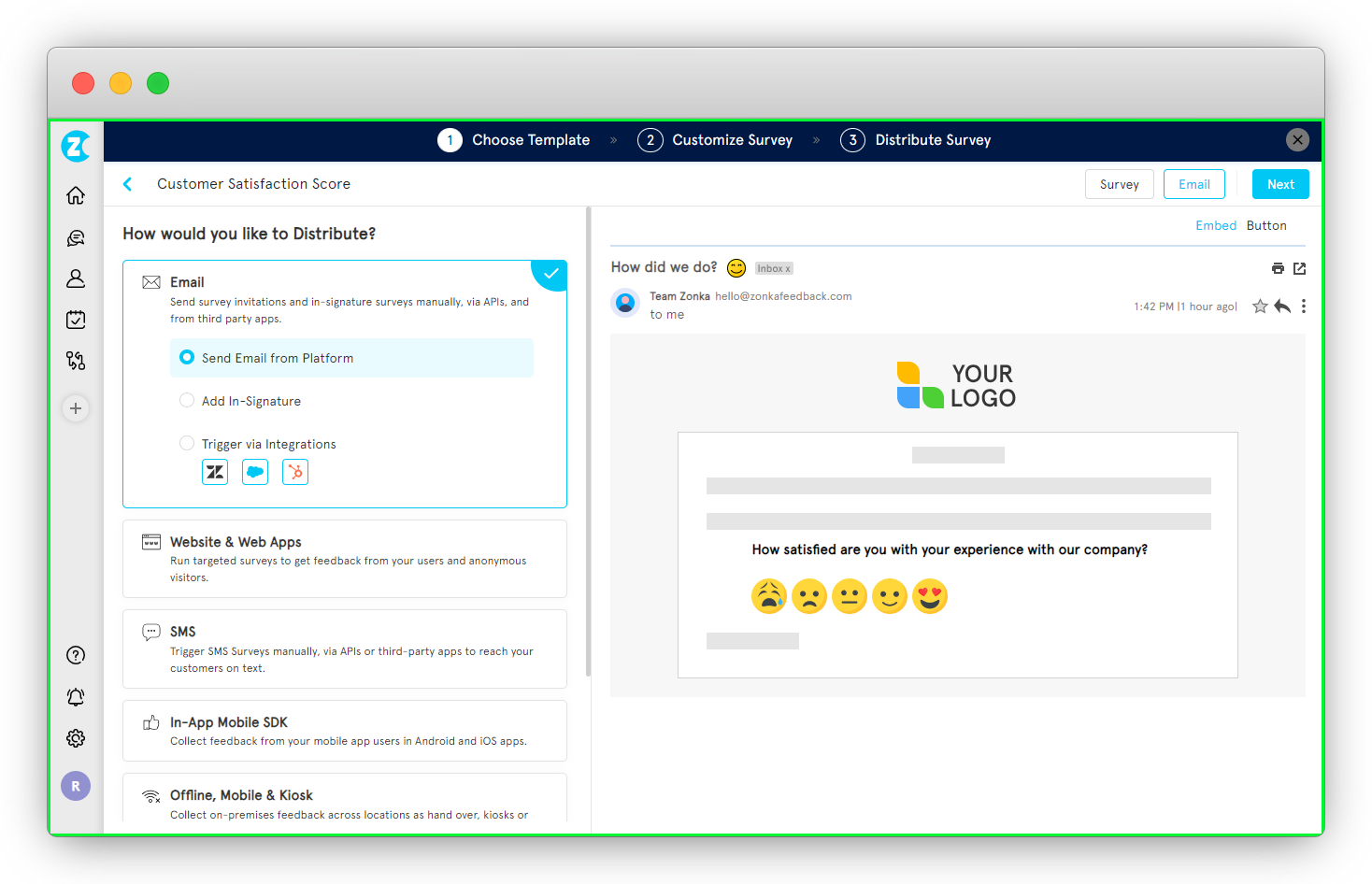
3. Customize and Design your survey
- After choosing the method of distribution as Email, you can customize and design your survey as per your objectives. You can tailor the questions, design, variables and languages of the survey.
- Choose a rating question as the first question that you want to embed in your email. You can consider using a CX metric like NPS, CSAT, or CES or choose from a variety of question types like Likert scale survey questions, radio buttons, and more.
- Add themes to the survey to design it as per your choice and set up survey logic to design the survey and make it dynamic for the customers.
- Whitelabel your survey and add your own branding, style, and colors to design the survey the way you want as per your brand identity and survey objectives.
- If you have audiences with different origins and language backgrounds, choose among various languages with the multilingual survey feature.
- Click on Next to go further and embed the question in your survey.
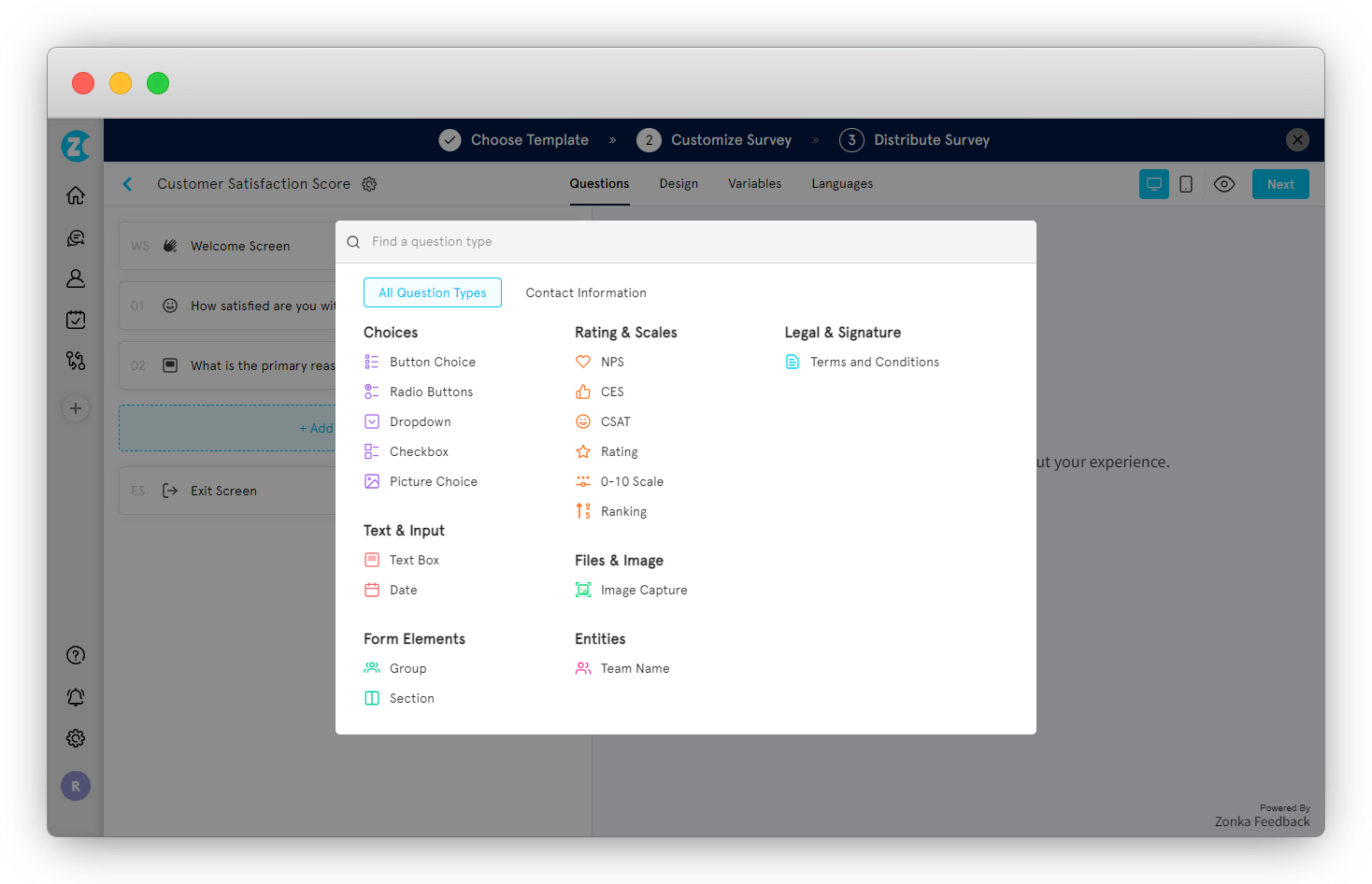 3. Choose the option to Embed a Survey and make the Email ready
3. Choose the option to Embed a Survey and make the Email ready
- Now, you will be asked to select the way you want to send email surveys. Two options, 'Question' and 'Button' will be displayed. To embed the question, choose the option Question.
- Add the subject line and email survey invitation message as per your requirements.
- You can also insert contact attributes or survey attributes from the option to Insert Placeholder.
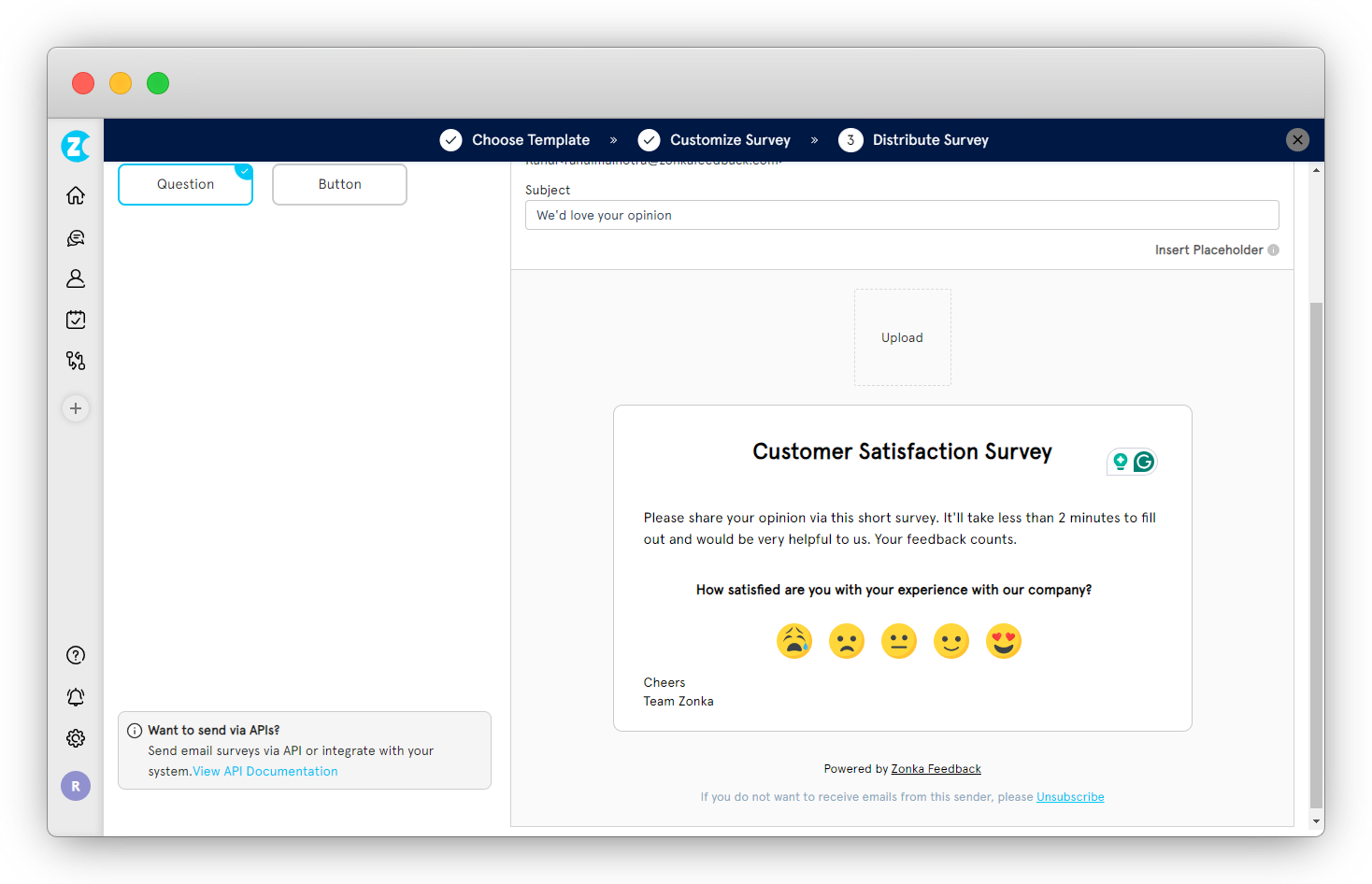
4. Add Recipients
Once you are ready with the email body, signature, and other settings, you can send your question-embedded email survey to your recipients. You can add your recipients in three ways:
- Manually — Add your respondents manually by adding the email IDs of your recipients.
- By CSV — Import CSV with email addresses. The CSV can also have additional data about respondents.
- By Contact Segment or List — Create a list of contacts in Zonka Feedback with new email addresses or previous respondents and send survey emails to them.
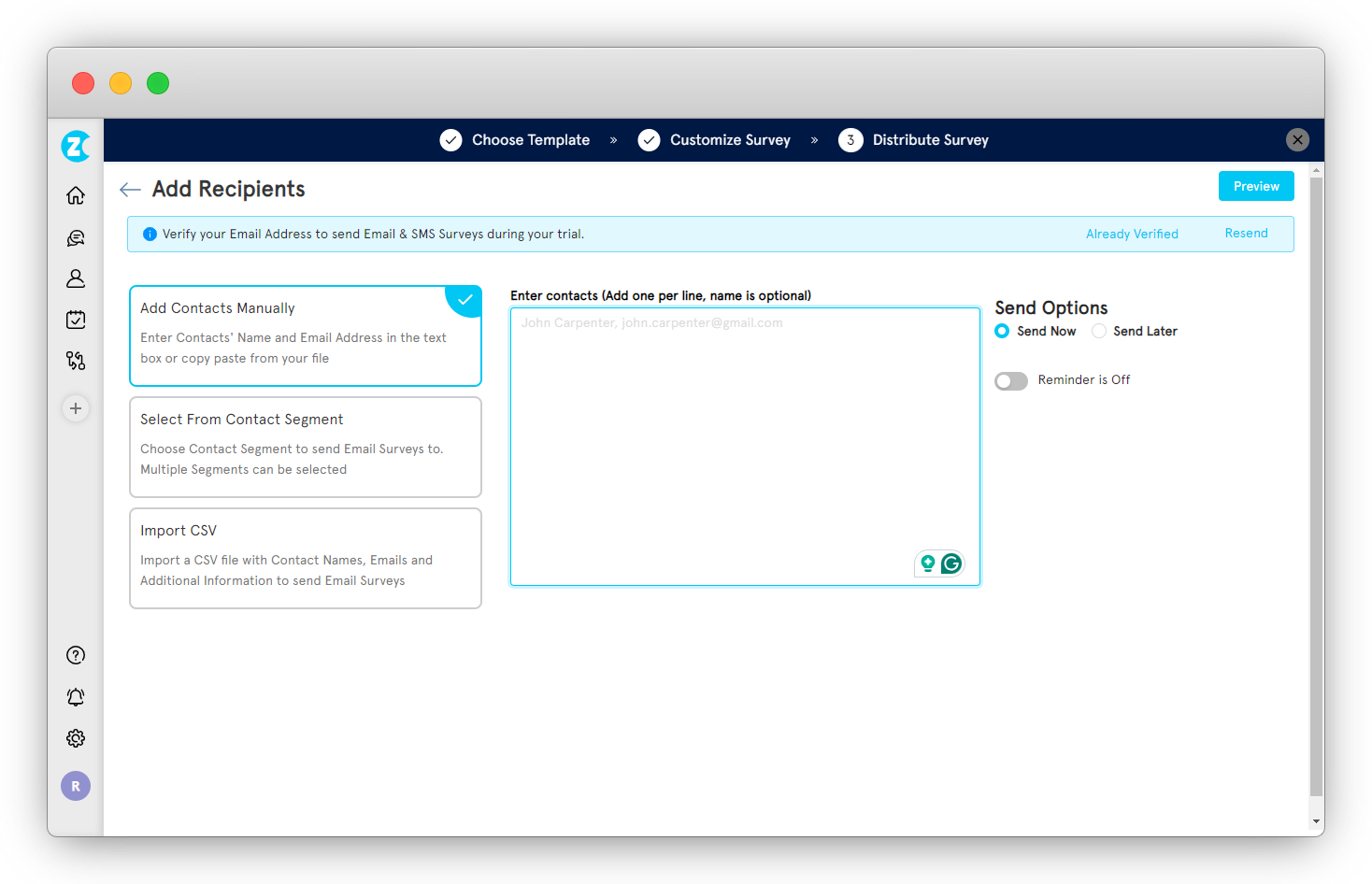
5. Preview and Send the Surveys
Like everything else in life, you should always cross-check your surveys as well.
- Preview the entire survey how it looks to your customer and ensure that it matches your requirements.
- Send a test mail to your team members to ensure everything goes fine before finally distributing the survey to the customers.
- If everything seems fine, you can finally send the embedded survey email to your customers.
Let’s review the types of survey questions that you can use while you embed the survey in an email.
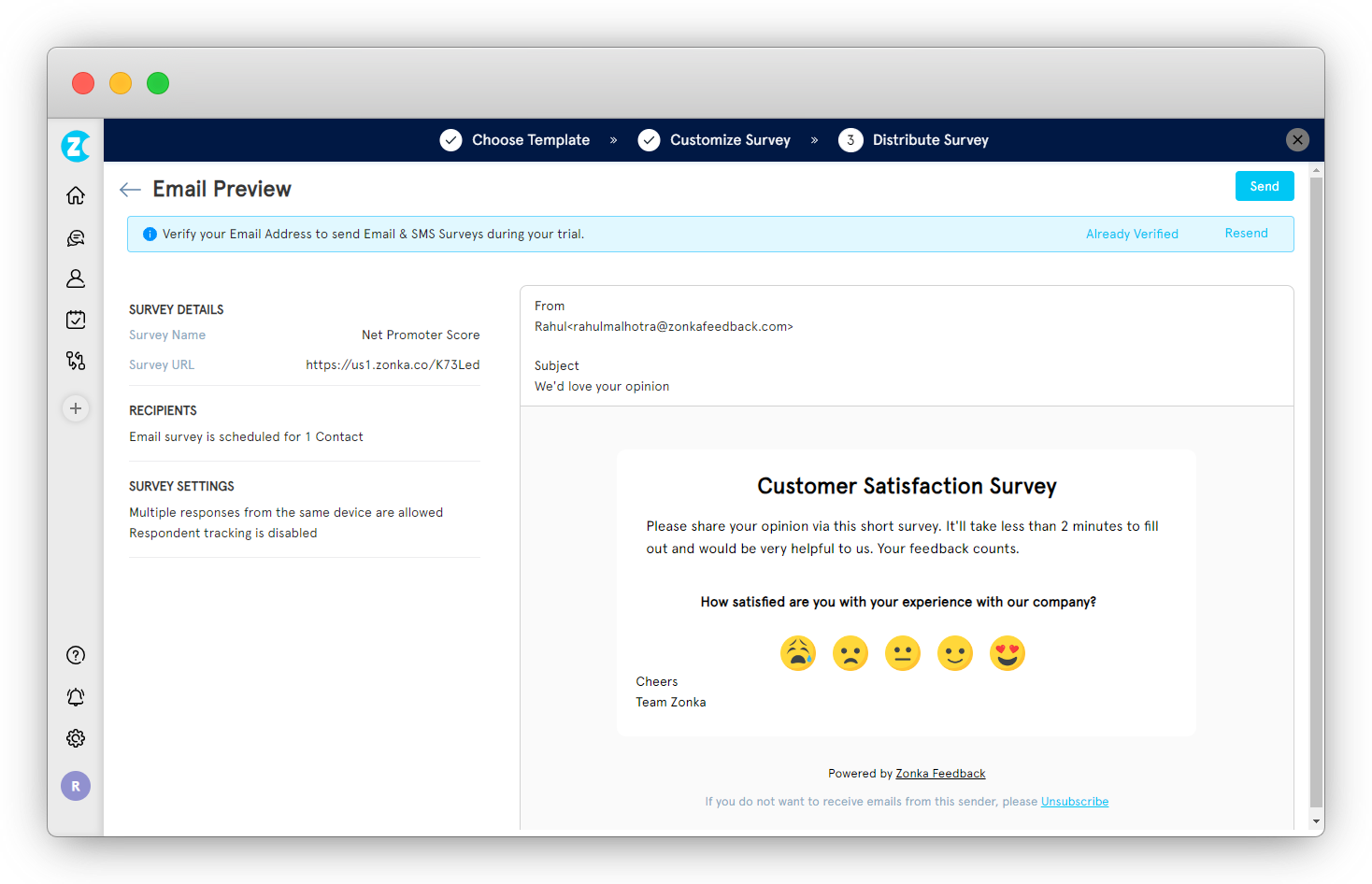 Types of Questions You Can Embed in Your Surveys
Types of Questions You Can Embed in Your Surveys
Here are the different types of questions that you can use in your surveys and then embed the survey in Gmail, Outlook or any other messenger.
1. NPS Question
Net Promoter Score or NPS Survey question is one of the most popular metric survey questions used to measure customer loyalty and satisfaction in terms of their likeliness to recommend a business to their friends and known ones. You can embed this NPS question in your embedded email survey.
Based on your experience with our products and services, how likely are you to recommend us to your friends and colleagues on a scale of 0 to 10?
Here 10 means Most Likely to Recommend and 0 means Not at all Likely to Recommend. The customers can easily select one rating from the options of the embedded question and take the survey.
 2. CSAT Question
2. CSAT Question
Customer Satisfaction or CSAT survey question is used to measure customer satisfaction by asking customers to express their levels of satisfaction with a particular product, service, interaction, or any aspect of your business. Here is an example of CSAT survey questions.
How satisfied are you with your experience with our products and services?
OR
How would you rate your recent interaction with our customer service team?
A five-point rating scale is provided to the customers to answer the CSAT question where a rating of 5 represents the highest customer satisfaction, and 1 represents the lowest or no satisfaction. Options can be embedded in the form of points, stars, adjectives from Poor to Excellent, or self-explanatory emoticons.
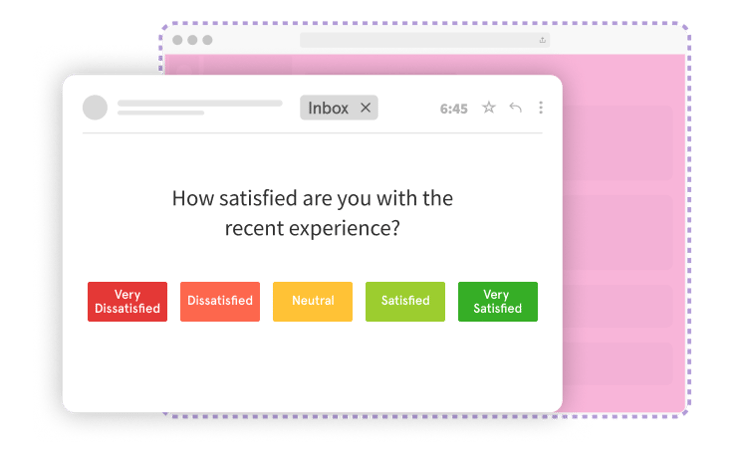
3. CES Question
Customer Effort Score or CES survey question is aimed at gauging people’s effort in doing business with you. A CES survey question is usually sent after customer support interactions or a ticket closure to understand if they were able to get the accurate resolution quickly without putting in much effort. The survey responses help in measuring agent performance and improving customer service in businesses. Here is the CES question you can embed in your email survey.
To what extent do you agree or disagree with the following statement? “The company helped me enough to handle my issues and get my work done.”
A 7-point rating scale is provided to the customers to ask the extent of their agreement with the statement. The options are: Strongly Disagree, Disagree, Somewhat Disagree, Neutral, Somewhat Agree, Agree, and Strongly Agree.
%20Question%20for%20retail%20surveys.png?width=782&height=287&name=CES%20(Customer%20Effort%20Score)%20Question%20for%20retail%20surveys.png) 4. Rating Question
4. Rating Question
A Rating Question is a closed-ended question that allows assigning numerical values or a graphical icon to answer choices that the survey respondent can select from. Each value on the rating scale is associated with an answer which helps businesses understand the perception and satisfaction levels of the customers. The idea behind these questions is to make it easier for the respondents to express their satisfaction without needing to write anything.
Rating questions can be 5-point rating scale questions, 4-point rating scale questions, 3-point rating scale questions, 2-point rating scale questions, 1 to 10 rating questions, or 0-10 rating questions.
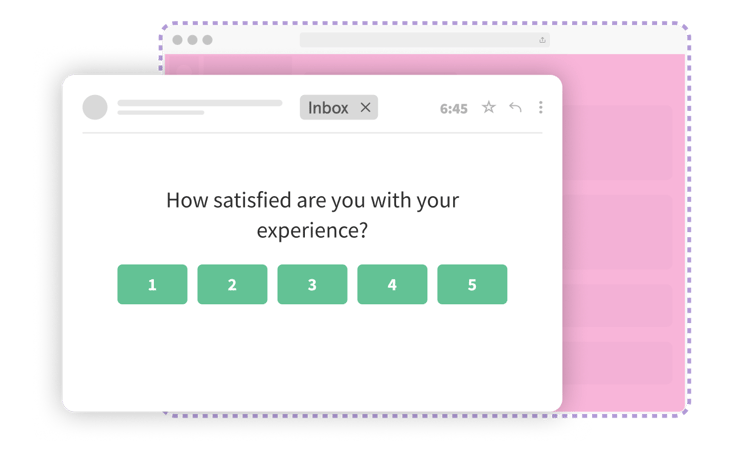
5. Star Rating Questions
Star rating questions are those in which customers are asked to express their perceptions and satisfaction levels in the form of stars like 1 star, 2 stars, 5 stars etc. The higher the star rating, the happier are the customers with their experience.
The most commonly used star surveys are 5-star surveys that businesses use to measure customer satisfaction with a product, service, or business on a 5-point rating scale where 5 points is the highest rating, and point is the lowest rating.
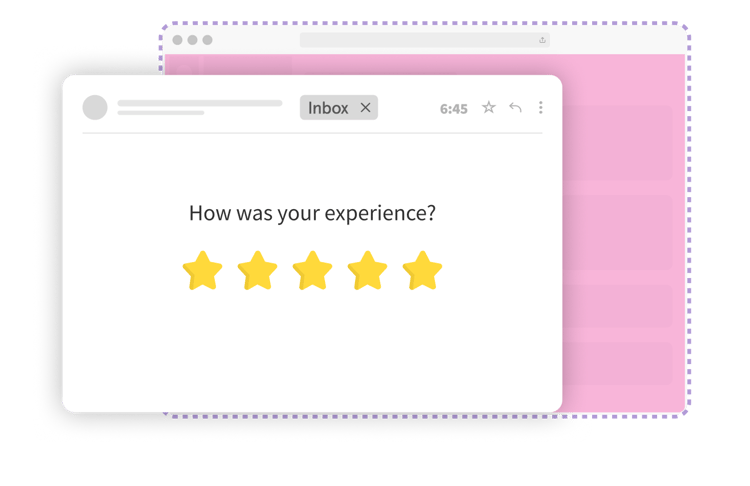
6. Smiley Questions
Smiley face survey questions are also a good option to use in your email-embedded surveys. In these questions, self-explanatory emoticons or smileys are used as the answer options for the customers to respond where a smiley like a crying or angry face can be used to express dissatisfaction and a laughing or lovable face can be used to express high satisfaction and likewise.
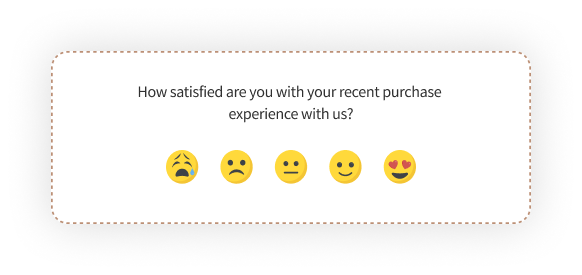 7. Thumbs Up/Down Questions
7. Thumbs Up/Down Questions
Thumbs up/ thumbs down Survey question is another type of question that you can use in your embedded email surveys where you want to provide simple by-optional answer choices to the customers to express their feelings like Yes or No, Like or Dislike, Happy or Sad and likewise.
These survey questions are super fast, simple and easy to answer for the respondents and can considerably increase the response rate of your surveys.
8. Checkbox Questions
When you want to enable your customers to choose two answers for responding to certain questions, checkbox questions can be useful to include in your email-embedded surveys. In these questions, customers can check more than one box to choose multiple answers to respond to a question.
9. Button Choice (Radio Button) Questions
A Button Choice Question is a single-choice question that allows respondents to choose one of the answers to a multiple-choice question. Radio buttons are used with the answer choices of these questions. Using this in your email-embedded surveys can help you increase the likeliness of the customers to take the survey.
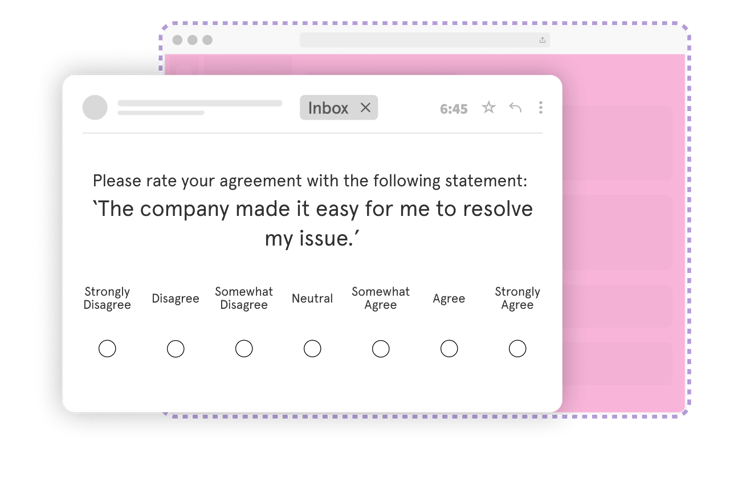
10. Picture Choice Questions
Picture choice questions allow you to give a pictorial representation of the options you add as answer choices in your survey questions. These questions are ideal to use in a survey where you want to explain options with the help of visual images.
For instance, if you want to collect feedback regarding some product designs and ask the customers which design they like the most, you can use the pictures of those designs as answer choices so that the respondents can better understand and give accurate responses to the survey questions.
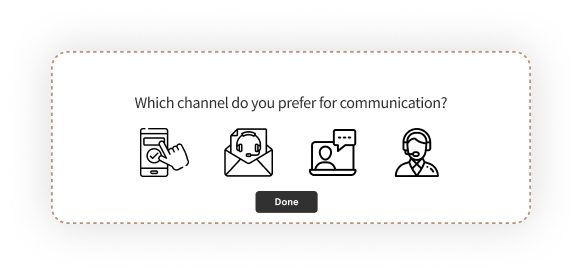 11. Matrix Rating Questions
11. Matrix Rating Questions
Matrix or Rating Scale Questions offer a structured format for gathering feedback on multiple aspects or dimensions within a single question. These questions are highly versatile and can be tailored to measure various metrics such as satisfaction, agreement, or frequency across multiple items.
Respondents are presented with a scale (e.g., from "Very Dissatisfied" to "Very Satisfied") for each aspect, allowing them to provide nuanced feedback on each item. Matrix questions are useful for gaining insights into different facets of the customer experience within a single survey question. Likert scale survey questions are a good example of matrix rating questions.
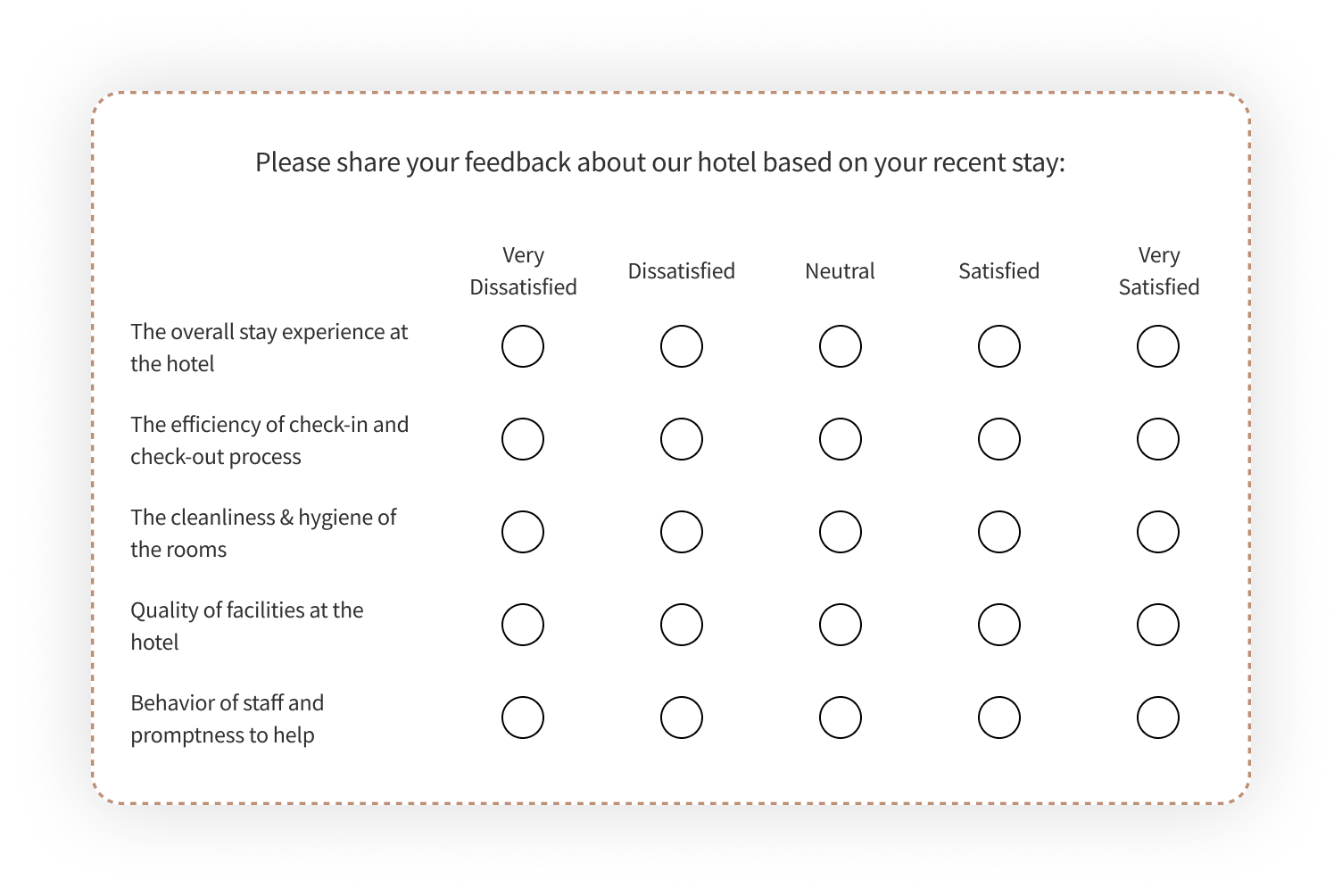 Let’s explore some best practices to embed a survey in emails.
Let’s explore some best practices to embed a survey in emails.
Some Best Practices to Use Embedded Email Surveys
Using embedded email surveys requires you to follow some best practices to leverage and make the best use of them. Here are some best practices to follow:
-
Always Use a Closed-Ended Question as the First Question - Your first question should be a closed-ended question like a rating question or any other question with clickable response options so that customers can click the option to answer that question. Starting with a rating question provides an immediate way for respondents to engage with the survey, making them more likely to continue and share their feedback.
-
Use an Engaging Subject Line - The subject line is the first thing which a reader views when he receives an email. It would be fair to say that the reader's decision to open the email majorly depends on the subject line. So Craft a subject line that captures customers’ attention. A compelling subject line like ‘help us to serve you better’ or a question in the subject line can significantly increase the email's open rate and survey response rate.
-
Create Short and Focussed Surveys - Embed a survey that is short and concise. Short, focused surveys are more likely to be completed by recipients. Avoid overwhelming them with an excessive number of questions and prioritize those that yield the most valuable feedback and insights.
-
Send it at the Right Moment or as a Regular Survey - Timing matters when deploying embedded email surveys. Transactional surveys, sent after a specific customer interaction, can yield immediate and accurate feedback. On the other hand, relationship surveys, sent periodically, help maintain ongoing engagement and measure overall satisfaction.
-
Specify Purpose and Time for Completion - Clearly communicate the purpose of the survey in the email, and explain to the customers how it can help you to serve them better. Also, provide an estimate of the time required to complete it like 2 minutes or 5 minutes. This transparency helps recipients understand the value of their participation and sets the right expectations about the timings, and they are less likely to leave the survey in between.
-
Don’t Ask Questions You Already Know - Avoid asking questions for which you already have information like which product customers bought or which branch they visited. Focus on collecting new, relevant insights that can drive improvements in your products and services.
-
Send Mobile-Responsive Surveys - Ensure that your email surveys are designed to be mobile-responsive. This way, respondents can easily complete the survey on their smartphones and tablets, leading to a higher response rate.
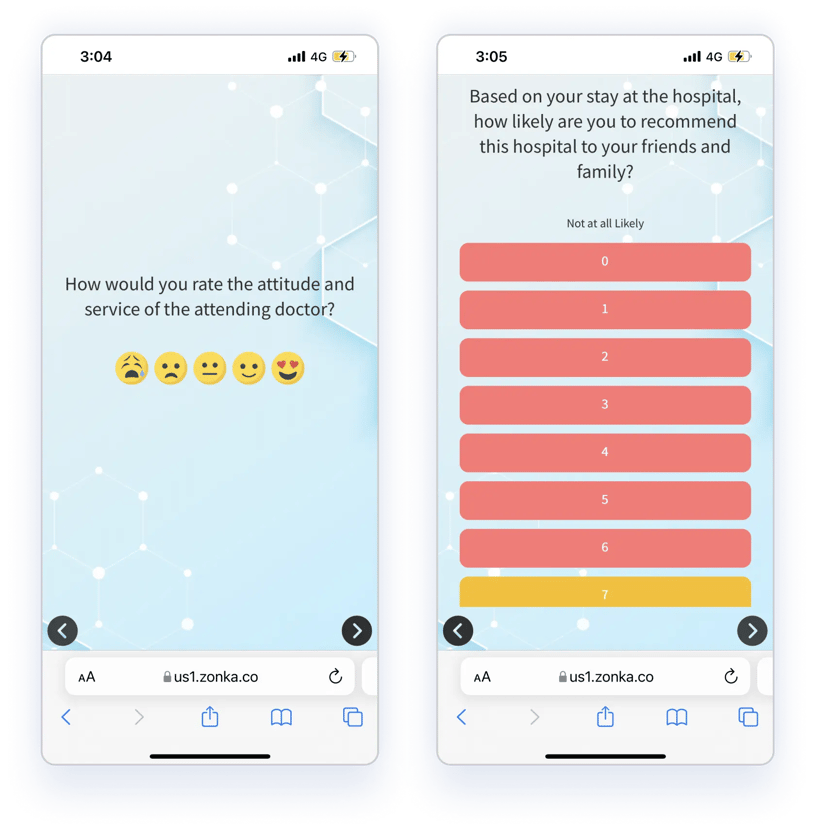
-
Use an Effective Email Survey Software - Always use an effective and robust email survey software that streamlines the process of survey creation and sharing, and lets you embed surveys in newsletter and emails on all popular email platforms. Moreover, the tool you choose should offer valuable analytics and assist you in the complete process of customer experience management.
Conclusion
Embedding a question in email is a great way to engage your customers as soon as they open the email and collect more responses than the usual email surveys. With the help of an effective feedback software, it becomes easier to create embedded email surveys and leverage them to collect valuable customer insights.
Zonka Feedback is one of the best customer feedback software which can serve the purpose. With this tool, you can personalize your emails with placeholders and add customers' name or other details in the survey. The tool helps you create embedded email surveys and share them through its powerful distribution and also avoid spam folders. Moreover, it enables you to get a complete analysis of the response data so collected and take action on the feedback to close the feedback loop effectively and improve customer experience.
It also offers a free trial. You can try Zonka Feedback for free for 14 days and harness the power of embedded email surveys.

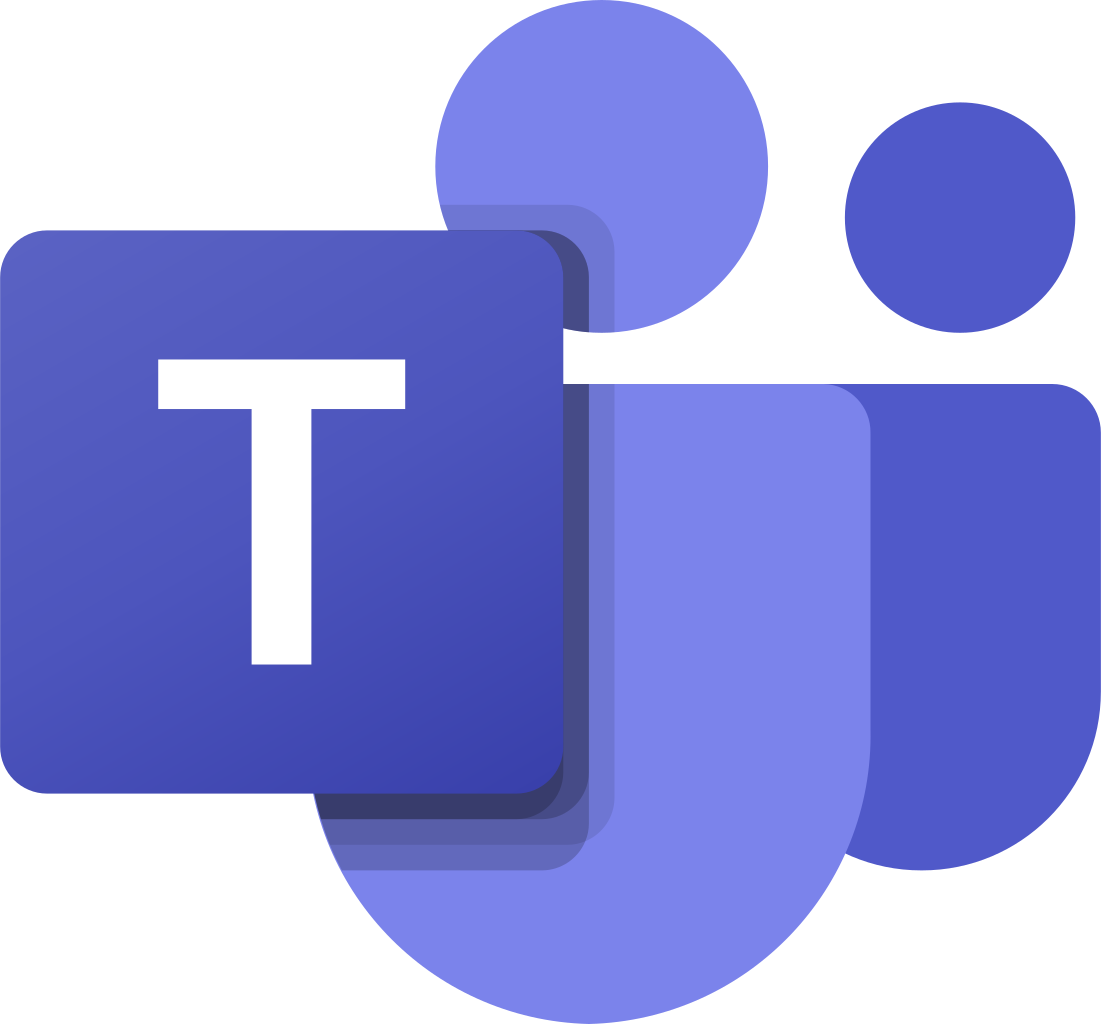 MS Teams
MS Teams
